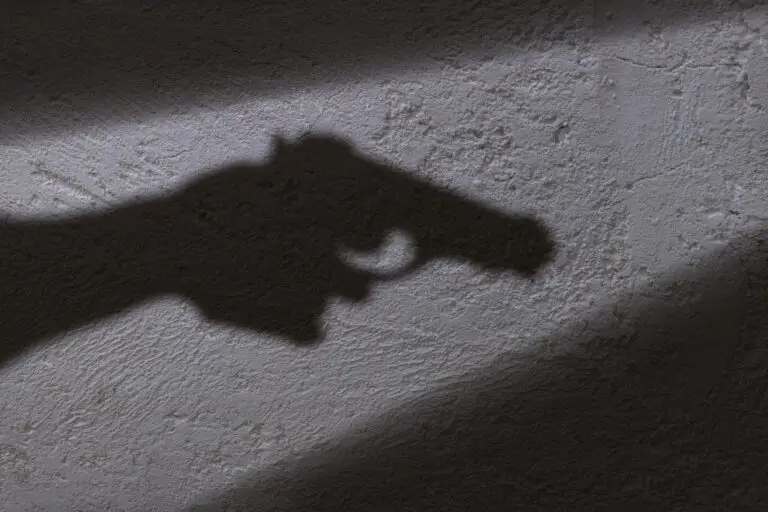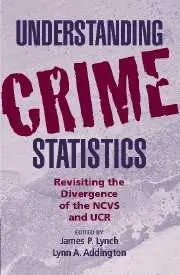
Isn’t it interesting that you, an individual police officer, can determine right from the beginning whether or not a crime gets counted.
~ Barry M. Baker Tweet

Detective Lieutenant Barry M. Baker (ret.) is a 32 year veteran of the Baltimore Police Department.
Downgrading crime occurs when police officers purposely or otherwise misclassify crimes reported by way of Uniform Crime Reporting. The FBI’s Uniform Crime Reporting (UCR) system was created in 1930. While voluntary, nearly all police departments participate by reporting crime to UCR.
Uniform Crime Reporting uniformly categorizes crime among 18,000 different police departments. The way state criminal codes categorize crimes has absolutely nothing to do with UCR.
(UCR Update: As of 2021, PART 1 and PART 2 Crimes are categorized as Group A and Group B Offenses respectively.)
The Media is Generally Clueless about Downgrading Crime
From time to time, the Media does a story about a police department downgrading crime. The only questions are to what extent is the downgrading occurring, and is the downgrading purposeful or occurring through ignorance and lack of training?
From a journalistic perspective, scandal is the most newsworthy reason to expose downgrading crime. Purposeful downgrading of crime by police officers at all levels of the police department’s rank structure should be the focus.
Journalists make the same mistake as many police officers. They pursue the fool’s errand of commingling Uniform Crime Reporting with state criminal codes. They try to compare felonies and misdemeanors, constructs of legislation, with UCR Part One and Part Two offenses.
Context of Downgrading Crime
Journalists drag prosecutors into the downgrading crime scandal, and they point out that prosecutors downgrade felonies to misdemeanors. Dah – that’s what prosecutors do. If you were to ask a prosecutor about UCR in relation to how your case is being charged, you’d get a blank stare.
Prosecutors couldn’t care less how you report the crime under UCR criteria, because how a crime is classified under UCR has no bearing on how a prosecutor charges a crime.
Why Uniform Crime Reporting is Important
These are the FBI’s words – “Criminologists, sociologists, legislators, municipal planners, the media, and other students of criminal justice use the data for varied research and planning purposes.”
Isn’t it interesting that you, an individual police officer, can determine right from the beginning whether or not a crime gets counted. It will always be your responsibility to start the crime counting process, and you’ll do that by writing a preliminary police report detailing the elements of the crime.
Your properly classified preliminary report prevents downgrading crime, and it ensures that the crime reported receives the attention it deserves for follow-up investigation and prosecution.
What are the Important UCR Part One Crimes?
Violent Crimes: murder and non-negligent manslaughter, forcible rape, robbery, and aggravated assault
Property Crimes: burglary, larceny-theft, motor vehicle theft, and arson
These are the crimes that the media, sociologists and others use to gauge the health of our civilization. This is the crime data from which legislators will provide funding for all areas of the criminal justice system.
Murder and non-negligent manslaughter will be accurate insofar as they are known to police, but the rest are prone to manipulation and downgrading crime.
Aggravated Assaults Drive Violent Crime Numbers
People fight all the time, and fights usually inflict physical injury. The extent of the injury determines whether an assault is aggravated or common under UCR criteria.
A man gets punched in the face, and the only injury he suffers is a bruise to his cheek. No medical treatment is required, and there’s no evidence to indicate any further injury from the assault. This is a common assault or Part Two crime under UCR.
The same man gets punched in the face, but this time he suffers a laceration to his lower lip requiring stiches. You’ll report this assault as a Part One aggravated assault.
Aggravated assaults drive violent crime statistics, so you can see where some police officers might play games that result in downgrading crime. Here’s an even better example. During the fight where the common assault occurred, the aggressor draws a gun and points it at the victim. The gun changes everything, because the act of pointing a gun at a victim is an aggravated assault under UCR.
Let’s say you work in a department where the police chief reviews all the Part One crime reports. In this police chief’s interpretation, the victim suffered no serious injury – period. The aggravated assault does not get reported to UCR. In other words, the police chief improperly downgrades the crime.
Misfeasance or Malfeasance – You Decide
You’re a new police officer working patrol in a large city, and your district is experiencing an increase in street robberies.
The district commander doesn’t trust his patrol officers to conduct a thorough investigation, so he directs that every robbery victim be interviewed by a robbery detective. One would think the purpose of this directive would be to avoid downgrading crime.
You’re a couple of hours into your 4×12 shift when you respond to a call for a report of an armed robbery. You’re met by a middle aged man who tells you he was walking two blocks from his home when he was stopped by a young man who pointed a gun at him and demanded his money.
The Victim Played Dead
The victim describes how he grabbed the suspect’s gun in an effort to disarm him. He describes a brief struggle with the suspect; until, the gun discharged. When the gun fired, it so startled the victim that he released his grasp of the suspect. In desperate fear, the victim pretended to be shot, and he fell to the ground holding himself as still as possible.
His hope was that the suspect would run away without shooting him again. The victim’s ploy worked, and the suspect fled. The victim lost no money or property, and he sustained no injury. It was an excellent outcome for a potentially deadly situation.
Following your commander’s directive, you cart your victim off to the station to be re-interviewed by a robbery detective. You meet with Detective Crystal Ball [an alias but obviously appropriate]. The victim repeats the details of the attempted robbery to the detective. At the end of the interview, the detective decides to locate the crime scene.
Shell Casing Recovered
You arrive at the crime scene where Detective Ball begins searching the ground. You’re impressed when her flashlight hits a shiny object laying on the ground, because you recognize it as a shell casing.
The casing is recovered exactly in the area where the victim reported the struggle took place. The casing is shiny revealing no prolonged exposure to the elements. It is obviously the casing discharged from the suspect’s gun. While you had no reason to doubt the victim’s report, the presence of the shell casing solidified the victim’s account.
The victim lost no property, so he wasn’t trying to create an excuse for losing his money in another manner. He wasn’t trying to falsely implicate someone he disliked since he had no idea of the suspect’s identity. No logical reason yet existed for downgrading this crime from an attempted robbery.
Your favorable impression of Detective Ball’s investigative acumen changes when she comes to a startling conclusion, “No attempted robbery occurred, because the victim’s entire report was fabricated.” The detective goes on to describe why the victim was lying. She describes the difference between a revolver and a semi-auto handgun. If the gun had been a revolver, no casing would be discharged from the gun. Since she found a casing, it was clear the gun was a semi-automatic.
Detective’s Ball’s Baseless Conclusion - Downgrading Crime
She does not dispute that a gun had been fired, but here is where it gets good. She states that if the victim grabbed the gun, he would have sustained an injury to his hand from the movement of the gun’s slide action when the gun discharged. Since the victim had no injury, she concluded, “CASE UNFOUNDED.”
The only thing the absence of a hand injury proved is that, during the struggle, the victim was not grasping the top of the gun when it discharged.
The scary thing is, you’re going to run into a lot of police officers, or those described as detectives, who make it up as they go along. If those officers put their own names to the official report, you don’t have to lose any sleep over it. However, if you’re directed to write what you know to be a false report, it’s all going to be on you. Remember, everything you write as a police officer will be with you for your entire career.
Downgrading Crime with a False Police Report
Detective Ball directed the officer to file the official report as UNFOUNDED. In this case, the department allowed the submission of an oral code if the incident was UNFOUNDED. Either way, this incident produced a false report by a police officer when it was clear that no evidence, whatsoever, existed for a determination of UNFOUNDED. This is a clear example of improperly downgrading crime.
Related Content for Downgrading Crime
Advertisements




